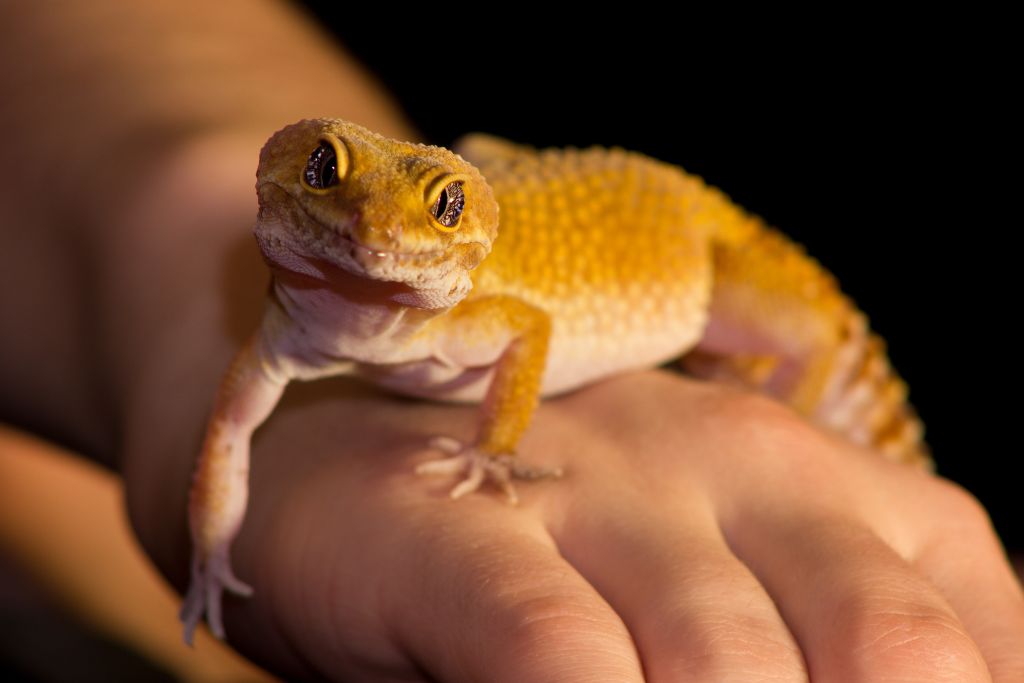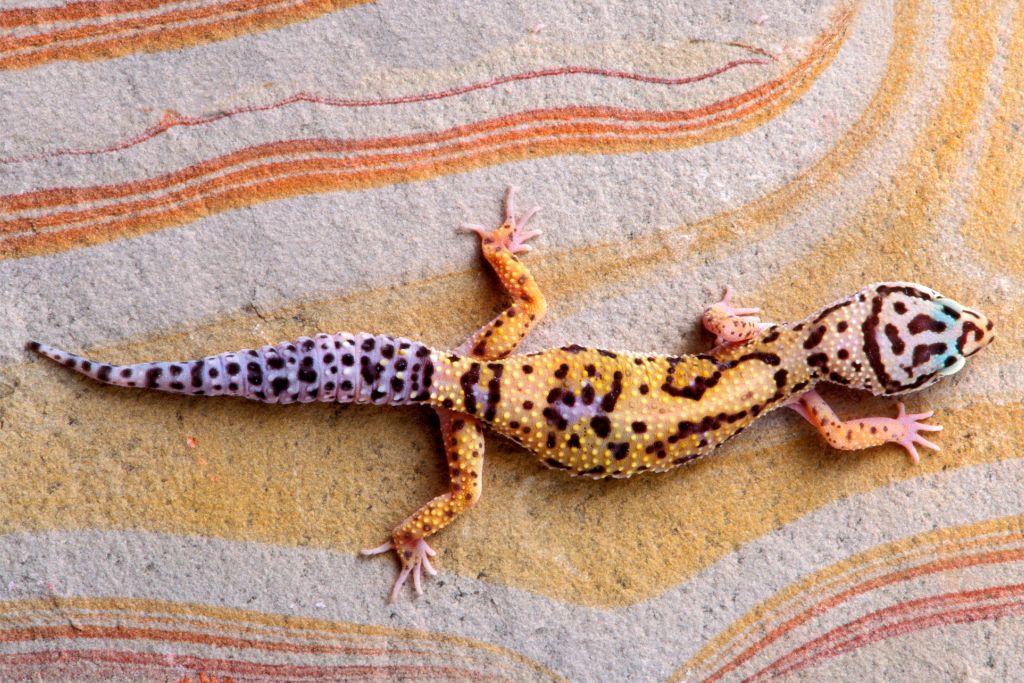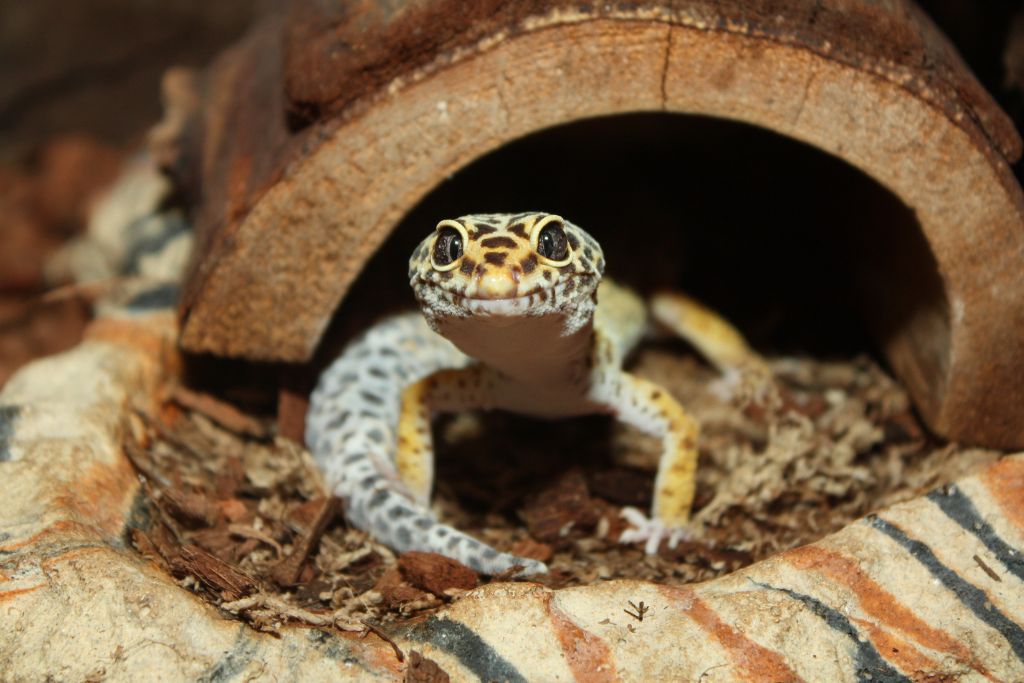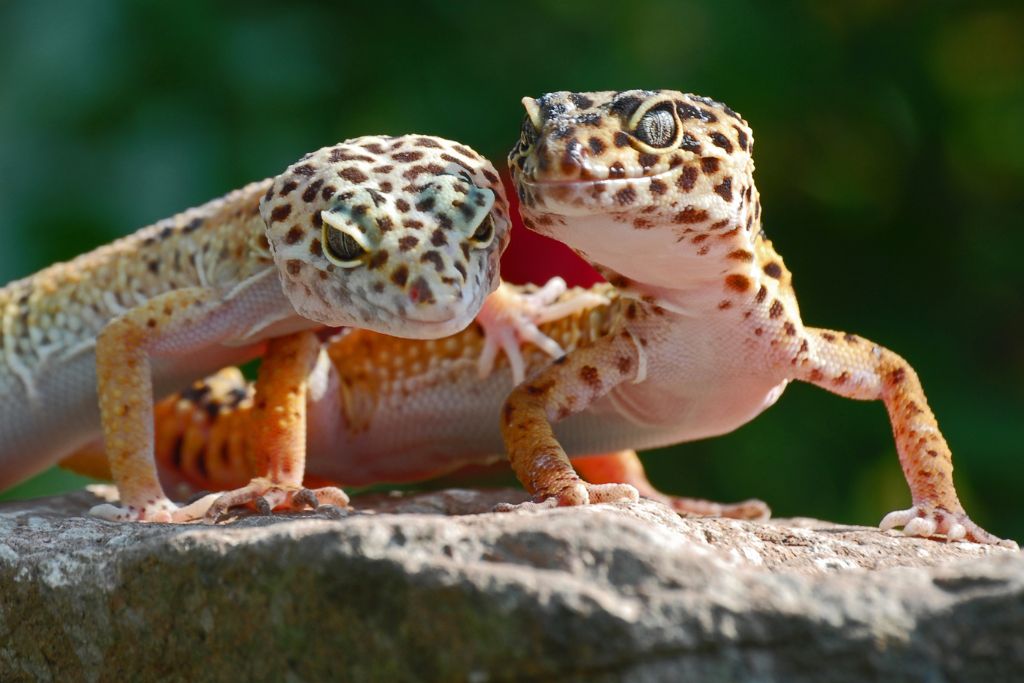Do you have a leopard gecko, or are you considering getting one as a pet? Ever wondered if these colorful reptiles enjoy human touch? How do they feel about being held?
Leopard geckos have become popular pets in many homes. People of all ages find them fascinating and love their appearance. Their bright eyes and skin catch the attention of reptile enthusiasts worldwide. But what about their preferences when it comes to human interaction?
This article aims to explore whether leopard geckos truly enjoy being held or if they just tolerate it. We’re on a mission to uncover the real feelings of these intriguing creatures, so let’s dive into the mysterious world of leopard geckos and their relationship with humans!
Understanding Leopard Geckos’ Natural Behavior

Leopard geckos originally come from the deserts of Asia and the Middle East. They live in dry, rocky areas in the wild and hunt for food, mainly at night. They are solitary creatures and are quite skilled at hiding from predators.
In captivity, this natural behavior might initially make them seem shy or scared. How they act in the wild influences how they respond to being held or touched by humans. Knowing their wild instincts, you can better understand why they might act a certain way when you try to hold them.
Understanding a leopard gecko’s instincts is key to providing the right care. It helps you know what environment they need to feel at home. Plus, it guides you in handling them in a way that respects their wild nature and keeps them happy and healthy.
Leopard Gecko Behavior in Captivity
Once they are in a home setting, leopard geckos start to adapt. Some become curious and friendly, while others might remain a bit shy. Just like people, each gecko develops its own personality. They learn to recognize their owners and may even enjoy being held.
Handling a leopard gecko in captivity can lead to different responses. Some might be curious and explore your hands, while others might pull away. It’s a normal reaction. With time and gentle handling, however, they usually become more comfortable with human interaction.
Taming and getting a leopard gecko used to human touch takes patience and understanding. You need to approach taming as a gradual process, handling them with care. When you learn about their natural behavior and reactions in captivity, you can build a strong bond and enjoy a fun, interactive relationship with your pet.
Factors Influencing Leopard Gecko Handling Preferences

Do leopard geckos all act the same way when you handle them? Not quite! Different things can change how a leopard gecko feels about being held. Here are some factors that might affect their comfort with human interaction and preference in handling:
- Age: Younger geckos might be more nervous, while older ones might be more relaxed.
- Temperament: Every gecko has its personality, so some might be naturally more curious or shy.
- Health: If a gecko doesn’t feel well, it might not want to be held.
- Previous Handling Experience: How the gecko has been handled before can make a big difference. If it’s used to gentle handling, it might be more comfortable.
- Environment: Their surroundings, like the lighting and temperature, can affect how the gecko feels about being held.
- Owner’s Approach: How you approach and handle the gecko can make it feel safe or scared.
These factors show that understanding and caring for a leopard gecko isn’t a one-size-fits-all approach. If you pay attention to these details, you can make your pet happier, and they may even enjoy spending time with you!
Building Trust and Bonding with Your Leopard Gecko
Building trust with your leopard gecko takes time, patience, and understanding. You can create a more enjoyable experience by building a strong bond with your pet. Here are some tips to help you make a close connection:
- Regular, Gentle Handling: Start slowly and gently to make your gecko feel safe.
- Positive Reinforcement: Reward good behavior with treats or extra playtime to encourage trust.
- Create a Comfortable Environment: Make sure their home feels safe and cozy.
- Respect Their Space: Give them time to get used to you, and don’t force interaction.
Recognizing Signs of Discomfort or Stress
Noticing when your leopard gecko is stressed or uncomfortable is crucial for their well-being. Understanding their body language and vocalizations can help you respond to their needs. Here’s how you can recognize signs of stress:
- Body Language: Watch for hiding, shaking, or stiff movements.
- Vocalizations: Listen for unusual sounds or hissing.
- Appearance: Look for changes in color or dull eyes.
- Behavior Changes: Sudden changes in eating or sleeping habits could mean stress.
Alternatives to Handling

You might find that handling is not the best way to interact with your leopard gecko. You can still have a great time together, though! Consider these alternative ways to connect:
- Hand-Feeding: Letting them eat from your hand can be a special way to bond.
- Playtime Outside the Enclosure: Create a safe play area for exploration.
- Observing Natural Behaviors: Watching them in their home can be fascinating and less stressful for them.
These alternatives offer enjoyable experiences that respect your leopard gecko’s comfort level and allow you to appreciate their unique characteristics and behaviors.
Conclusion
Understanding and respecting a leopard gecko’s preferences is at the heart of responsible pet ownership. Every gecko is unique, and what makes one happy might not be the same for another. Treating your pet with compassion and learning about their behavior, likes, and dislikes creates a loving bond that benefits both of you.
Being a good leopard gecko owner involves more than feeding and cleaning. You must create a safe, enjoyable environment, build trust, and recognize when they’re comfortable or stressed. Care and compassion may ensure they live a happy, healthy life and have a great relationship with these interesting creatures.
FAQs
Do Leopard Geckos Like to be Petted?
Some leopard geckos might like gentle petting, depending on their personality and how used to handling they are. You should start slowly and watch their reaction.
What Geckos Like to be Held?
Different geckos have different preferences. While leopard geckos are known to tolerate handling, it can vary from gecko to gecko. Building trust and observing each gecko’s behavior helps to understand their preference.
How to Hold a Leopard Gecko?
To hold a leopard gecko, approach them slowly and gently scoop them up with your hand. Support their body, especially their tail. You can make them feel more secure by holding them close to the ground at first. Be gentle and patient, and always watch the gecko’s reaction to make sure they are comfortable.
Is it Okay to Hold a Leopard Gecko?
Yes, you can hold a leopard gecko, but you should do it with care and patience. Observing their comfort and preferences is essential.
Do Leopard Geckos Like Being Picked Up?
Some leopard geckos may enjoy being picked up, while others may just tolerate it. Each gecko is unique, so it’s essential to pay attention to their reactions and preferences.





